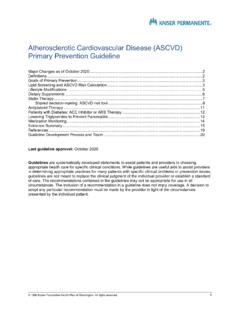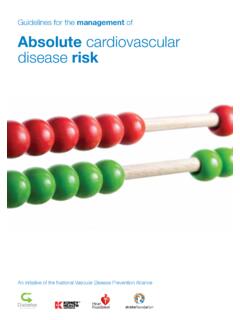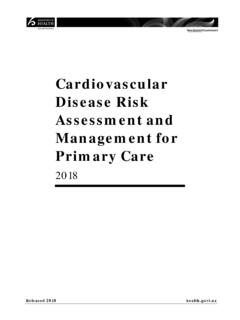Transcription of EXTREME HEAT CAN IMPACT OUR HEALTH IN MANY WAYS
1 BACKGROUND. When we burn fossil fuels, such as coal and gas, we release carbon dioxide (CO2). CO2 builds up in the atmosphere and causes Earth's temperature to rise, much like a blanket traps in heat. This extra trapped heat disrupts many of the inter . connected systems in our environment. Climate change also a ects human HEALTH by increasing the frequency and intensity of EXTREME heat events . Increases in Climate change poses the overall temperature of the atmosphere and many risks to human oceans associated with climate change cause changes in wind, HEALTH .
2 Some HEALTH moisture, and heat circulation patterns. These changes con . tribute to shifts in EXTREME weather events , including EXTREME impacts of climate change heat events . are already being felt in the United States. THE CLIMATE- HEALTH . We need to safeguard our CONNECTION. communities by protecting EXTREME heat events can be dangerous to HEALTH even fatal. These events result in increased hospital admissions for heat- people's HEALTH , wellbeing, related illness, as well as cardiovascular and respiratory disorders. and quality of life from EXTREME heat events can trigger a variety of heat stress climate change impacts.
3 Conditions, such as heat stroke. Heat stroke is the most Many communities are serious heat-related disorder. It occurs when the body becomes unable to control its temperature. Body temperature already taking steps to rises rapidly, the sweating mechanism fails, and the body address these public cannot cool down. This condition can cause death or permanent disability if emergency treatment is not given. HEALTH issues and reduce Small children, the elderly, and certain other groups including the risk of harm. people with chronic diseases, low-income populations, and outdoor workers have higher risk for heat-related illness.
4 Higher temperatures and respiratory problems are also linked. One reason is because higher temperatures contribute to the build-up of harmful air pollutants. Many cities across the United States, including St. Louis, Philadelphia, Chicago, and Cincinnati, have seen large increases in death rates during heat waves. ACTIONS WE CAN TAKE TO PREPARE FOR. CLIMATE CHANGE. We can responsibly manage the problems facing our environment by taking sensible steps toward protecting human HEALTH and safety. Whether measures are meant to reduce future climate change impacts or address the HEALTH impacts of climate change that are happening already, early action provides the greatest HEALTH bene ts.
5 It makes sense to invest in creating the strongest climate- HEALTH adaptation and preparedness programs we can. Reducing the release of heat-trapping gases like CO2 can help protect our HEALTH and wellbeing by decreasing impacts on our climate system. Activities that reduce the amount of heat-trapping CO2 in the atmosphere are many of the same things we already know prevent HEALTH problems. Active modes of transport like biking or walking can help reduce tra c-related air pollution and encourage physical activity, which has public HEALTH bene ts including reduced rates of obesity, heart disease, and diabetes .
6 ACTIONS WE CAN TAKE TO PREPARE FOR. EXTREME HEAT events . We also need to take actions that make our communities less vulnerable to climate change impacts already in progress. Many communities have programs to address climate-sensitive HEALTH issues. When it comes to managing the HEALTH threats associated with EXTREME heat, there are approaches that we know work: Heat wave early warning systems can protect people by communicating heat wave risks and suggesting protective actions. These warning systems are much less costly than treating and coping with heat illnesses.
7 Heat alerts serve as triggers for cities and counties to take preventive action, like opening cooling centers where the public can gather for relief from the heat. Air-conditioning is the number-one protective factor against EXTREME heat, which is an essential HEALTH resource for vulnerable populations. Staying hydrated and avoiding strenuous outdoor exercise during heat alerts can protect individuals from adverse e ects of EXTREME heat. Providing easy access to public drinking fountains, swimming pools, and spray pads can help keep people cool during periods of EXTREME heat.
8 Updating building codes and landscaping laws can increase energy e ciency. It also improves the ability of buildings to provide protection against EXTREME heat events . For example, green roofs (roofs with plant cover) and strategically located shade trees can reduce indoor tem . peratures and improve buildings' energy e ciency. Urban forests, including street trees and wooded areas, can mitigate urban heat islands, reducing local air temperatures by up to 9 F. Department of HEALTH and Human Services Centers for Disease Control and Prevention This h s doc docu d ument e t was as funded fu d ded d tthrough h ough cooperative coope at e ag agreement ee e t U38O.
9 U38OT000131. O 000 3 b bet between ee th thee Cente Ce C terss for fo Disease D sease Control Co t ol and C a d Prevention e e t o and a d the the American e ca Public ub bl c HEALTH ealth Association. ssoc at o . The he contents co te ts of of tthis h s document docu d e t are a e solely solely the the respo esponsib s bility b l ty of the the auth authors os and do not necessarilyy represent p the official views of the Centers for Disease Control and Prevention or the American Public HEALTH Association.















